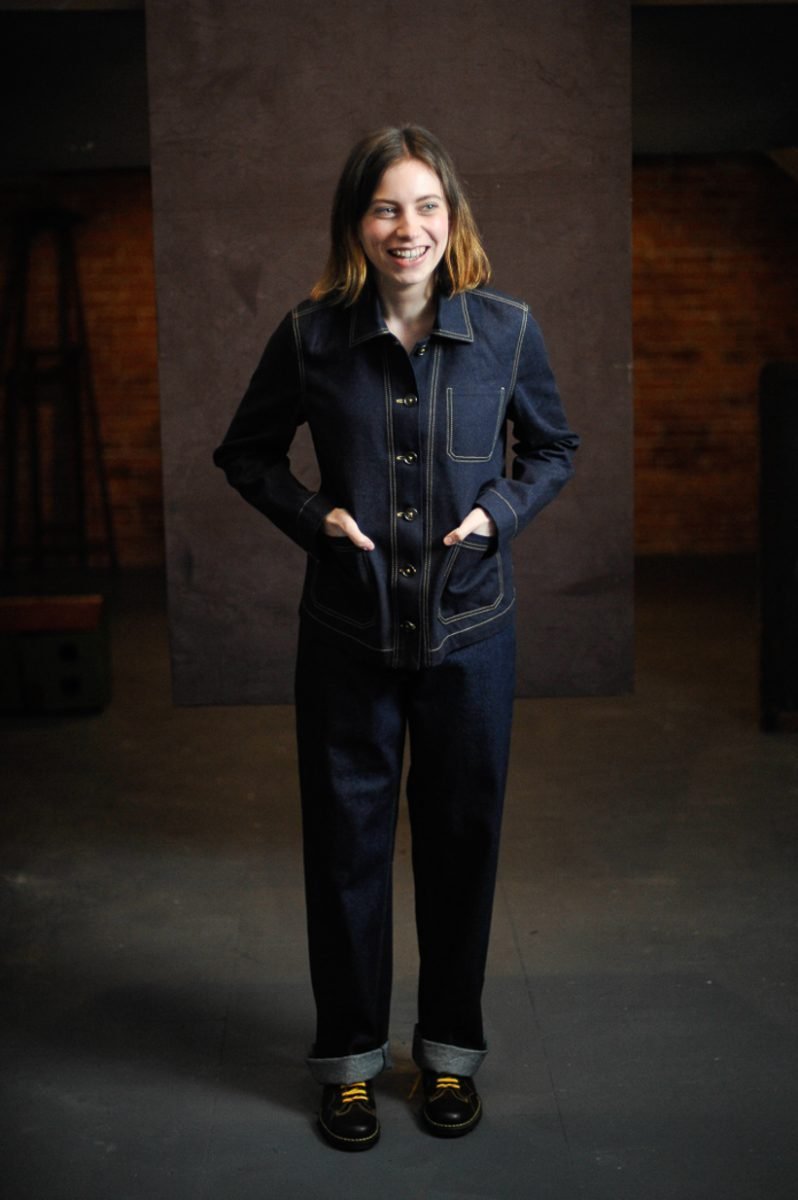
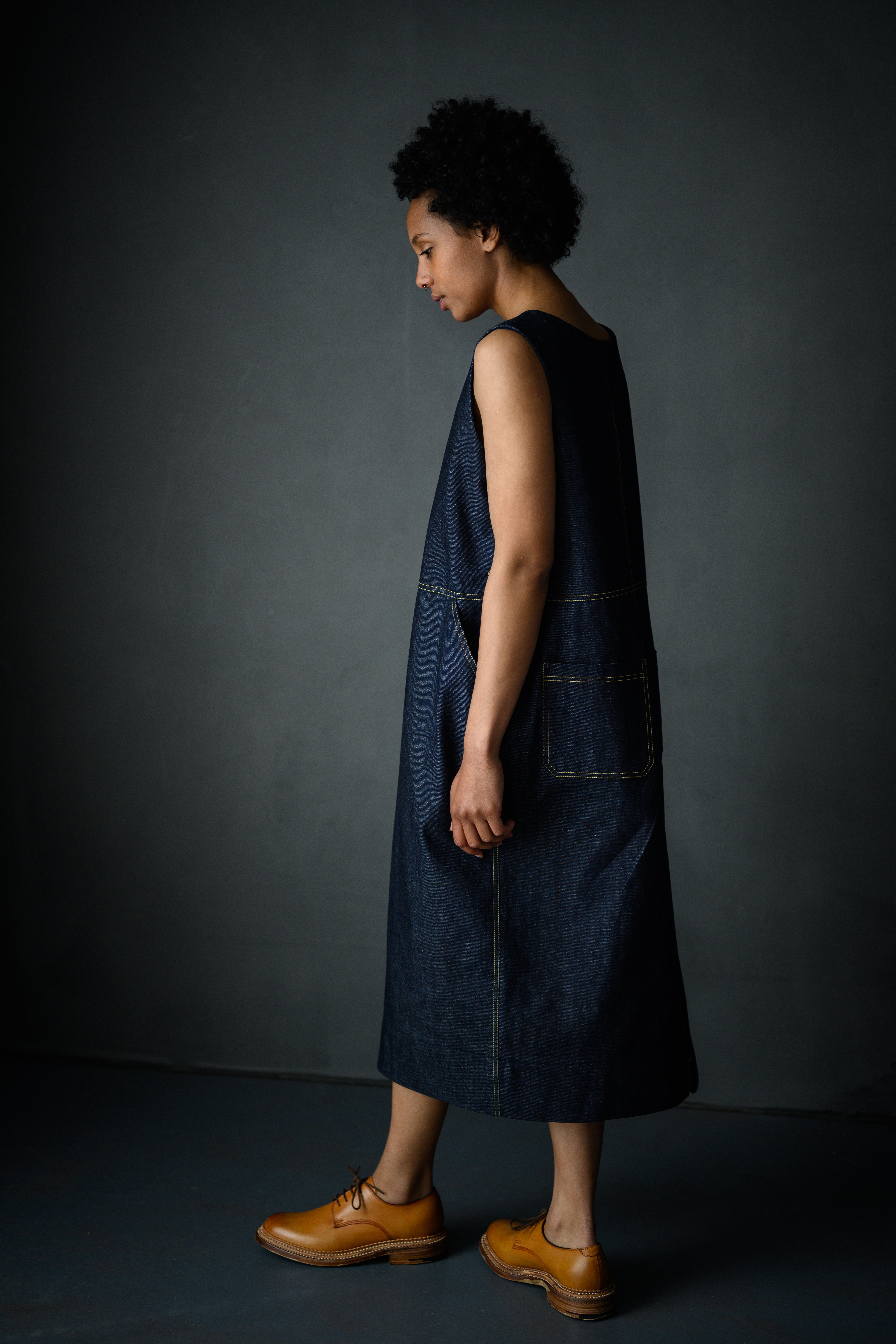
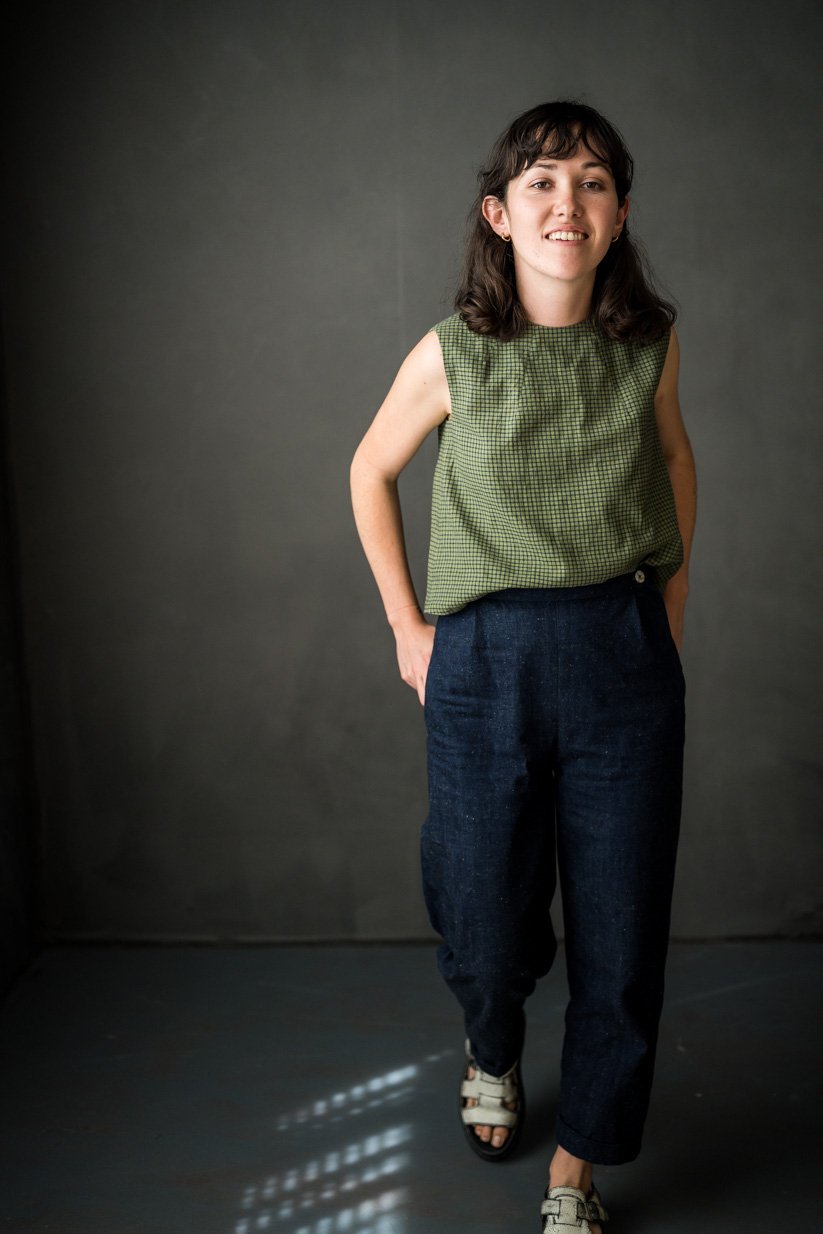
The Cloth
Denim is made to last a lifetime. Made using cotton and characterised by its indigo blue colour and twill weave, it’s a hardy, utilitarian cloth that can withstand lots of wear. It ages beautifully around the seams.
Production & Certification
There is so much to say about the production of denim that multiple books could be (and have been) written on the subject. We’ve found that the best places to source denim are Turkey, Japan and Italy. We choose to mainly buy deadstock denim as the environmental cost of producing new denim is extremely high due to the huge amount of water required.
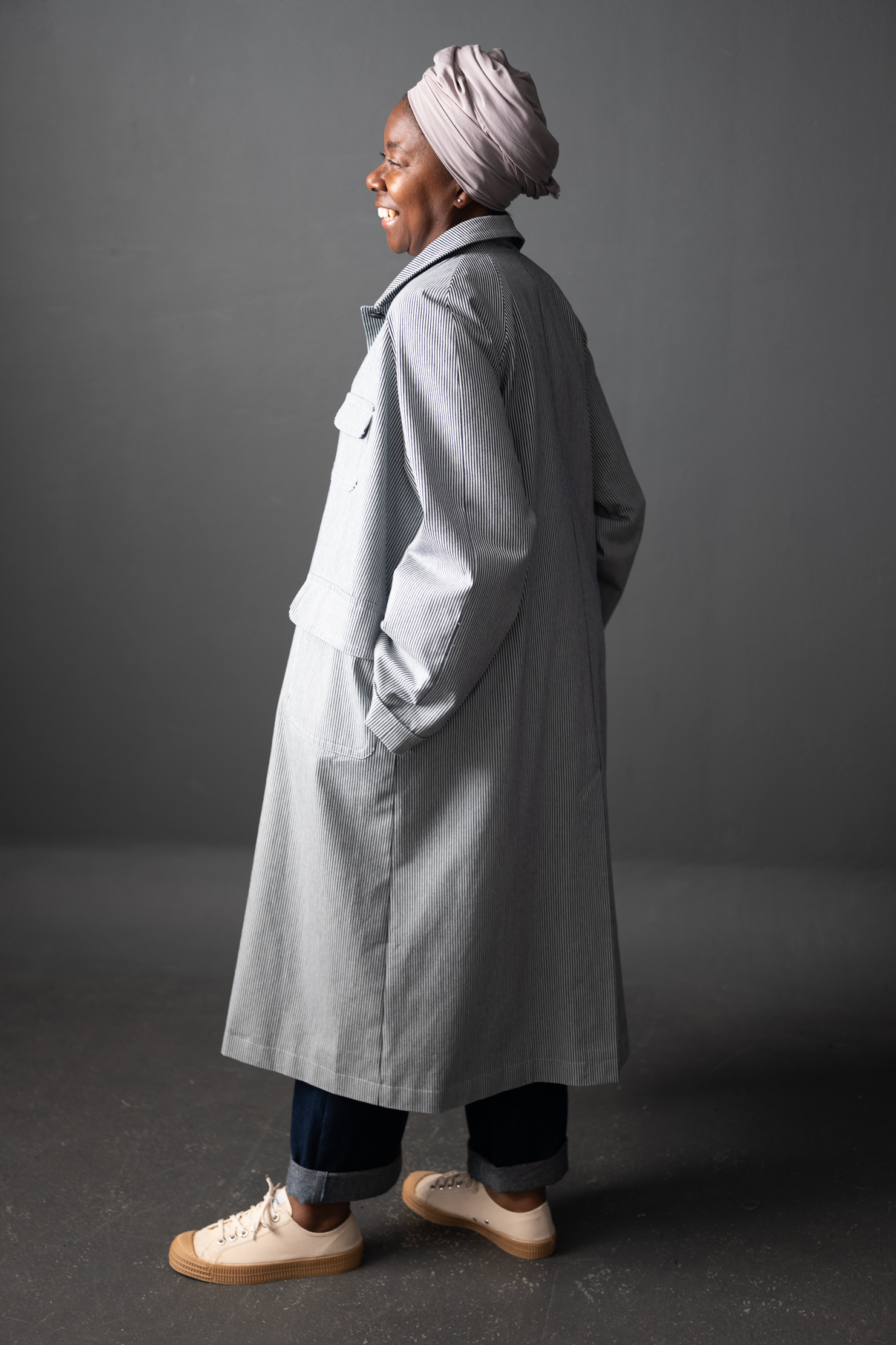
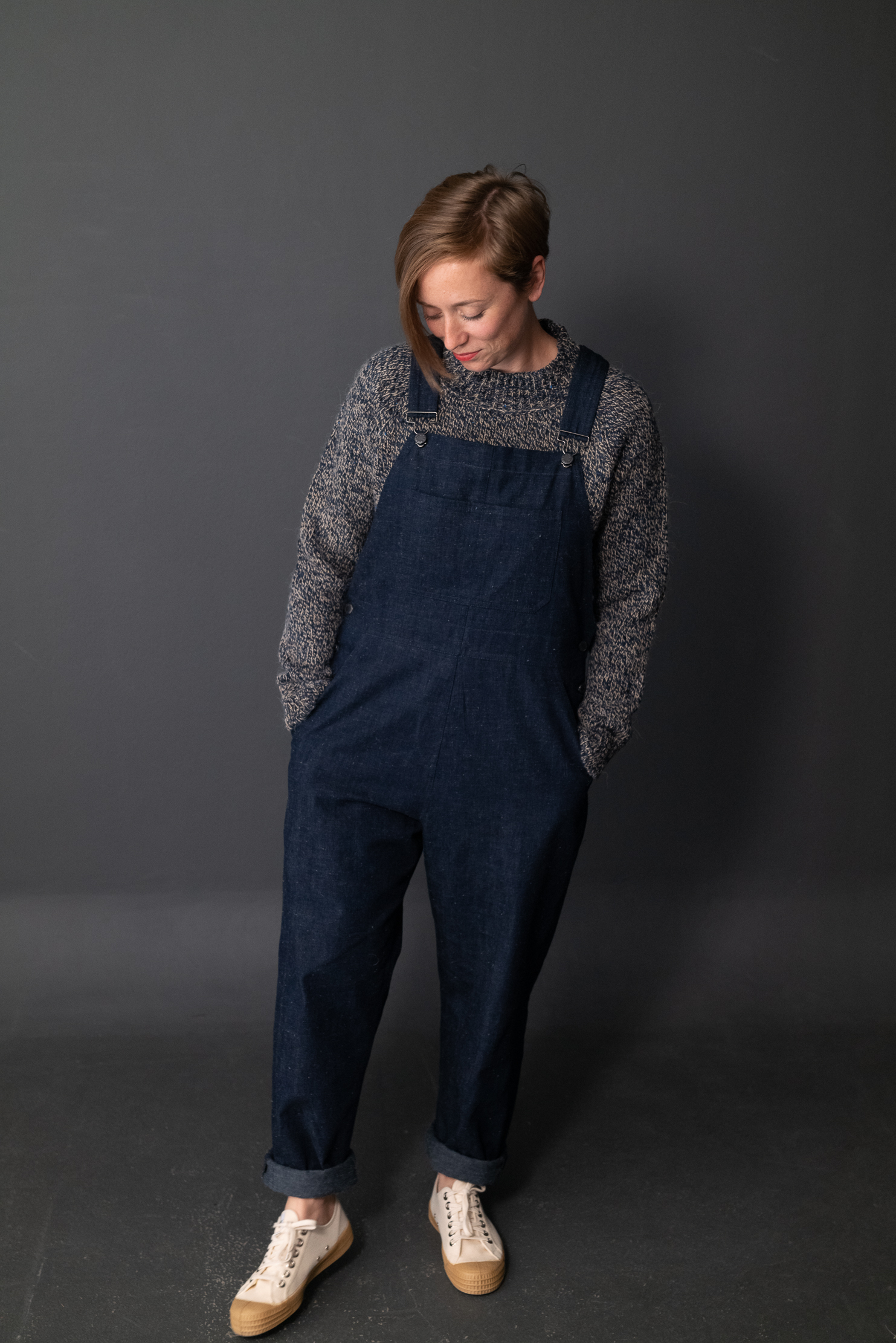
.jpg)
Suitable Fabrics
How to sew denim
MACHINE SET UP
- Needle: Jeans needle 90 (14), strong and thick – made for the job.
- Thread for construction of seams: You can use a standard Sew All Thread in a matching colour.
- Thread for top stitching: We recommend a heavy duty thread rather than a top stitching thread. We find the top stitching thread very thick and actually much thicker than a standard jeans topstitching. A heavy duty thread will give you that definition, contrast and strength that you want.
- Bobbin thread: We generally use a standard Sew All Thread in the bobbin for best results but all machines are different so you will need to experiment to find the best results.
CONSTRUCTION SEAMS
- Jeans are made with a flat fell seam, which is very strong and hardwearing, however it is quite difficult to achieve with denim and a domestic sewing machine. So we recommend to make your jeans with a regular seam that it is pressed to one side and finished with a double row of top stitching.
- For a smooth start, fold a small piece of denim into a little rectangle and wedge this under the presser foot at the beginning and end of seams. This will keep the presser foot level. Gently walk the needle over very thick seams by turning the wheel by hand.
- You may need to use a tailor’s clapper or a hammer (covered in some cloth padding) to flatten some really bulky seams before stitching.
TOPSTITCHING
- Adjust the machine to accommodate thread for top stitching. You can use a regular thread in the bobbin. Practice to get the top stitching neat and even.
- The top stitch will distort slightly when going against the direction of the twill. This is particularly noticeable on the back pocket detail.
- Increase the stitch length for top stitching. A typical jeans top stitch length is between 3.5 and 4 setting on a domestic machine.
- You may find it easier to chalk out the back pocket design and front fly. Always test first, but chalk will easily brush off most denims.
- Do not back stitch any top stitching. Leave both ends and pull them through to the back and fix them off with a hand sewing needle.
- If you look at a pair of high street jeans, the top stitching often isn’t high quality, so go easy on yourself. We are aiming for authentic rather than perfect!
- If your machine just won’t make a bar tack through thick denim especially on areas such as belt loops don’t fret, just run a straight stitch back and forth, it will look slightly more tailored and do the same job.
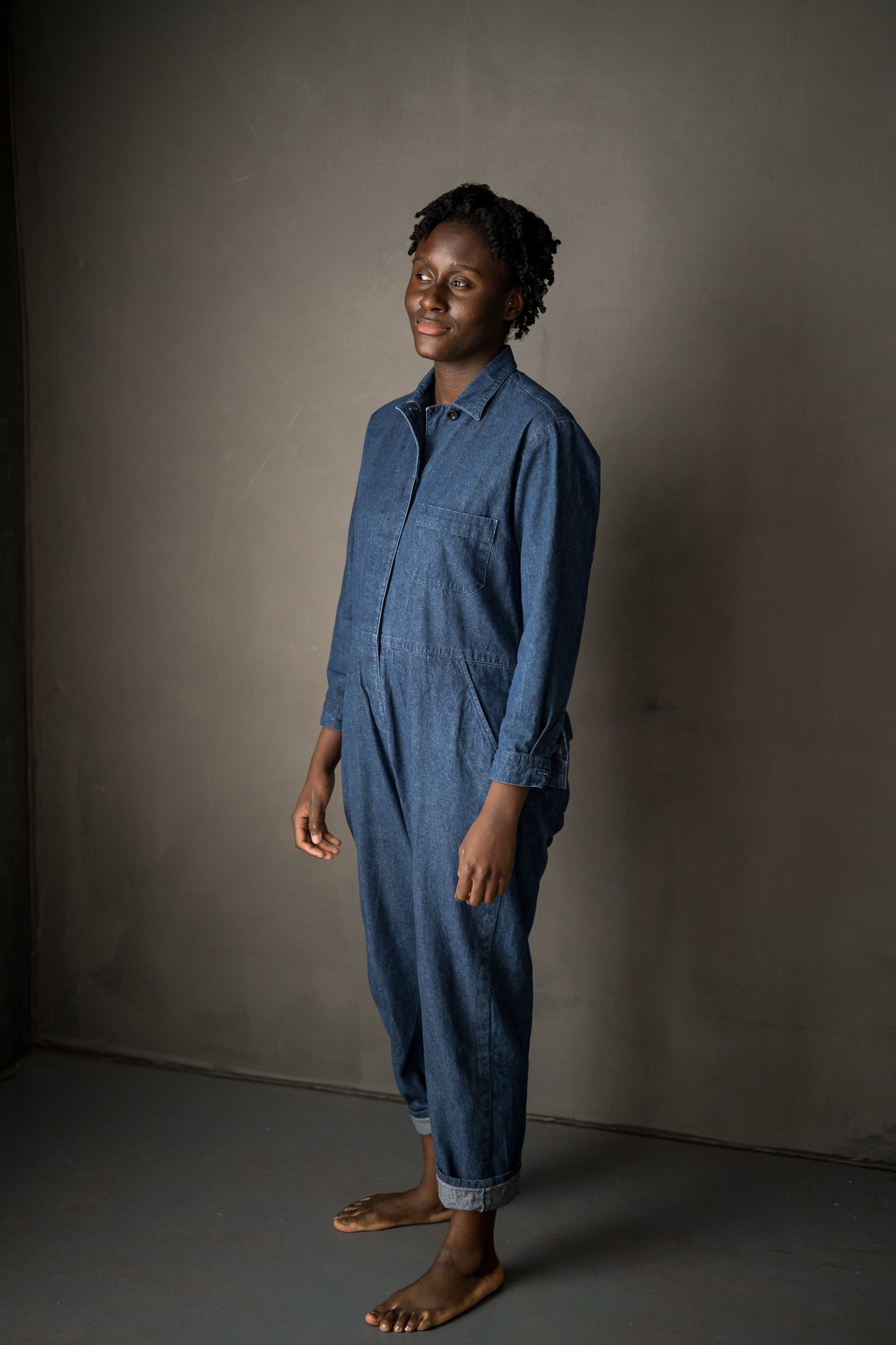
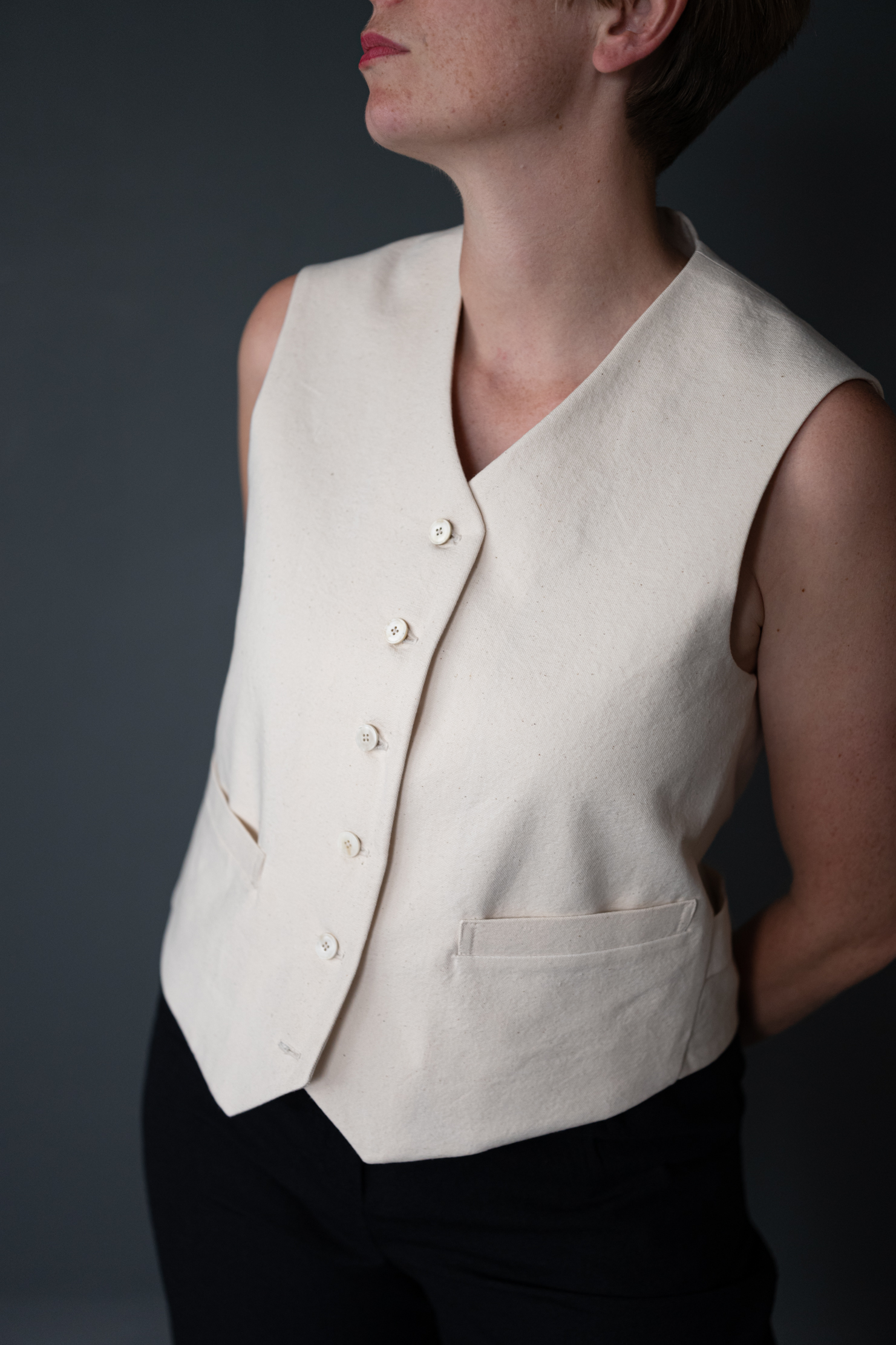
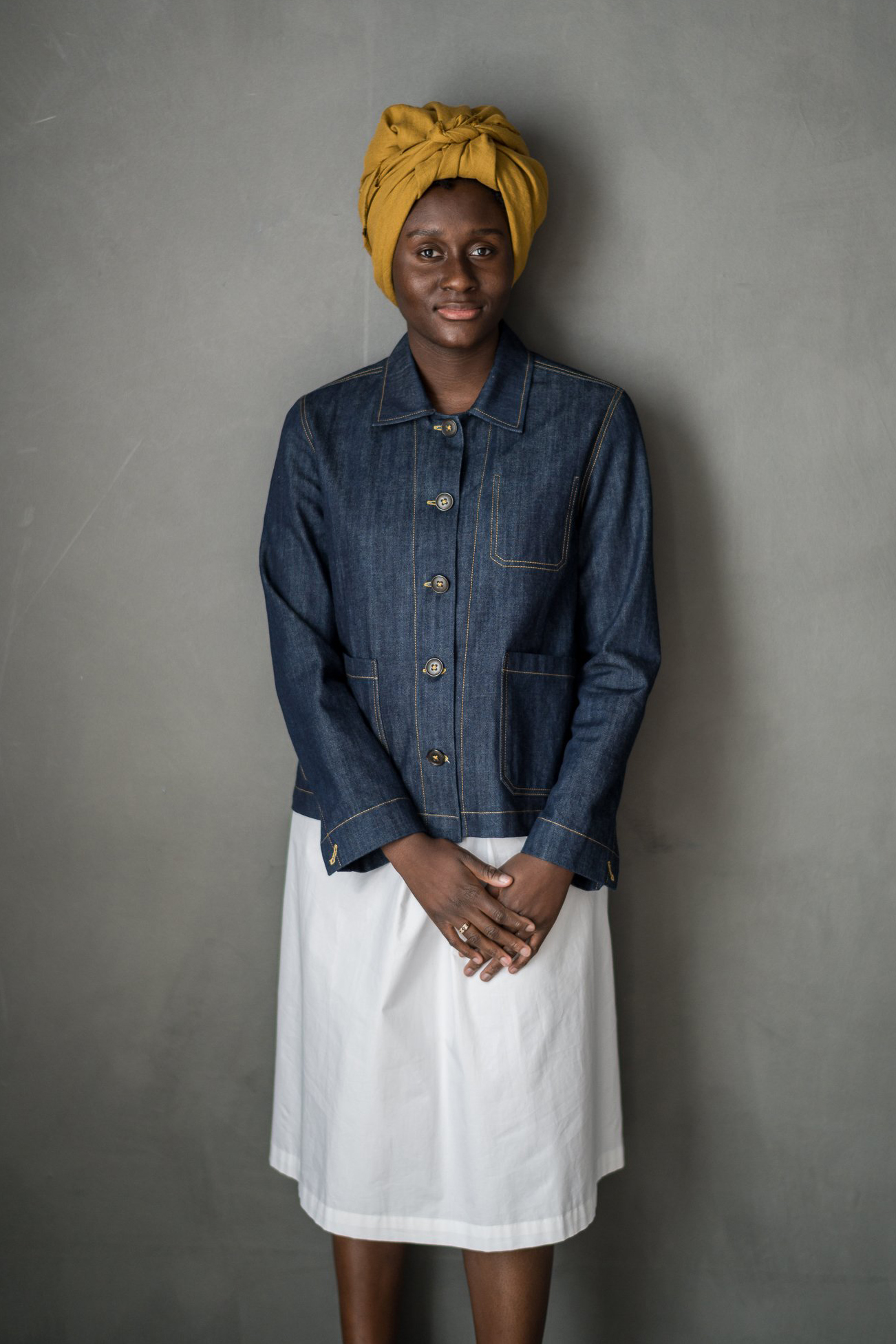
Fabric Care
HOW TO PRE-WASH DENIM
We recommend pre-washing your denim before sewing. Denim should be washed on its own for the first wash, at 30 degrees with non-bio detergent, on a low spin. Do not tumble dry.
Avoid putting one large piece of medium-heavy weight denim in the washing machine, as it can sometimes leave white creases in the denim (as the cloth does not have room to move around in the machine drum). If you can, cut your denim fabric in half before washing. As well, prior to the first wash, we recommend submerging your denim in water first and letting it fully absorb so that you are putting wet denim in the washing machine. If white creases do develop, ironing whilst the denim is still damp will help. For best results, use a medium-hot setting with steam.
HOW TO WASH DENIM
Once your garment is sewn up, we recommend washing as little as possible. When you do wash your denim makes, turn them inside out to reduce fading. Wash at 30 degrees with non-bio detergent on a low spin, and avoid adding too many items to your machine to avoid creasing.
HOW TO DRY DENIM
Do not tumble dry, and instead let your denim air dry. Do not dry or store denim in direct sunlight as it can bleach your fabric.

.jpg)